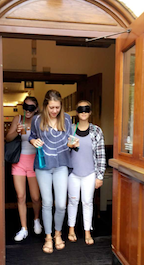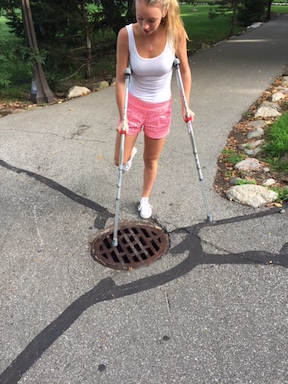Last week, fourth-year undergraduate students in the School of Architecture experienced for themselves the challenges of maneuvering throughout campus with a physical disability. As part of this annual “Accessibility Awareness Day,” students were confined to wheelchairs, crunches, and even blindfolds for the morning.

Notre Dame Disability Services along with the Office of the University Architect participate in this event through the School of Architecture each fall. This opportunity for students is aimed to not only raise awareness, but also to motivate budding architects to design buildings accessible to all people.
As a participant in this event, I was exposed to a new perspective of on-campus life. It was eye-opening to discover how difficult some areas were to access, like the Grotto in particular. Despite the physical challenges of getting through doorways independently, rolling up and down ramps, and attempting to access restrooms, the social stigma was probably the most difficult obstacle to endure. While many students on campus were eager to help out, I despised feeling pitied and dependent.
Fourth-year studio professor John Mellor advised us to photograph our struggles over the course of the morning. My small group of four students noticed a myriad of little problems, such as countertops or shelves too high for a wheelchair, vents in the ground with openings that crunches could slide into, and more.

After spending a morning exploring campus with a feigned disability, our class met for a seminar that afternoon. During this time, the University Architect gave a presentation on current initiatives to improve accessibility on campus, including lowering countertops and tables in labs and renovating sidewalks. Chris Hartz, a local South Bend architect, discussed the importance of accessibility from a personal and professional perspective. Other presentations were also given to encourage us, as aspiring architects, to design with an open mind.
As a class, we discussed the most challenging parts of our mornings and other things that surprised us along the way following the presentations. Although we are embarking on our fourth year of studying architecture, this was the first time we discussed the issue of accessibility in detail. After experiencing the struggles firsthand, I am much more motivated to create inclusive designs suitable to all.